As preppers, we are taught to prepare for the unexpected.
And because of this, we waste no time in stocking up supplies and pack our 72 hour bag for a possible bug our situation.
But contrary to popular belief, selecting the best go bag to carry is also crucial to our survival. It’s not about the space of the bag which allows you to carry a lot of stuff.
You may have a lot of things inside you bag, but can it guarantee your safety if it can also affect your speed and mobility?
And on the other hand, you can’t focus entirely on comfort as you need your essentials to endure the challenges ahead.
In the end, it’s all about balance and this can only be achieved by carefully choosing a bug out bag to purchase.
In this article, we are going to tackle the most important things that we are not told when buying your bug out bag from the fundamental elements of the bag to the questions we need to ask whenever we purchase a pack which we are going to carry in times of survival.
This article is created so you will be able to know what is not usually told in order for you to make the best out of the survival gear you are going to bring when the unforeseen happens.
Every Wise Buyer Knows That Not Everything Can Be Bought With Money
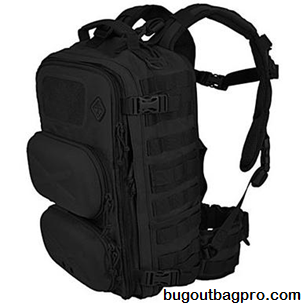 Before we tackle the juicy part, let me assure you that all the things I’m going to share here are based on my personal knowledge as a retailer as some stores do not actually give what the customer needs.
Before we tackle the juicy part, let me assure you that all the things I’m going to share here are based on my personal knowledge as a retailer as some stores do not actually give what the customer needs.
They only give what they think the customer needs and that’s a big difference.
As buyers, you need to know to unknown. It’s not about the money because I want the customer to actually get your money’s worth with the item that they purchased not just to gain profit for my own sake.
So learn these tricks of the trade which are not usually told to average buyers here as I’m going to share some of the crucial elements you need to know whenever buying a bug out bag:
1. Bug out bags don’t come cheap
This is true. While I mentioned a while ago that not everything can be bought with money, the truth can’t be said with buying a bug out bag. Some might be fooled in buying a cheap backpack right away, but eventually this decision is not worth it as the quality of these low-priced bags are usually compromised. Let’s put it this way, the more features included, the more pricey it is. And it’s up to you to determine which of these features you can really use to get the bag that’s worth every penny.
2. The size of the bag matters
Most of us are led to think that the bigger the bag, the more useful it is. That’s why some preppers pick the biggest backpack they can find out there even if they all look stupid wearing it. The truth is, the size of the bag must be appropriate to your body as every individual have different body types. In picking a bug out bag, every prepper must look into this chart first so you can choose the bag that’s ideal to your body:
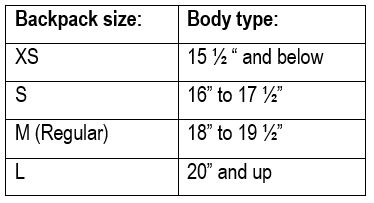
3. Color can be a factor in saving your life
Yeah, I know camouflage is in these days. In fact, it is so hyped that most preppers and outdoor enthusiasts opt for this colorway most of the time.
If you’re going to ask me, I think it’s not a 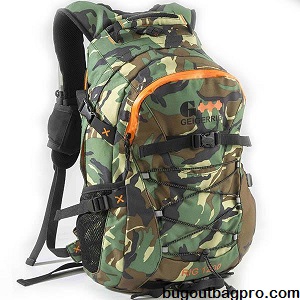 better idea to have camo bug out bag especially if you’re living in the city because it gives non-preppers an idea that you’re a prepper.
better idea to have camo bug out bag especially if you’re living in the city because it gives non-preppers an idea that you’re a prepper.
And when it’s time to leave the city, they might see you as potential target as they might think you have a lot of food supply in your bag and hurt you as they grab your gear.
On the other hand, it’s also not wise to carry a colored bag if you’re living in the wilderness as you are only revealing your location to hostile forces in times of emergency when you should blend in to your surroundings.
In short, we should be mindful to the bag’s color and make sure it will be appropriate to wear according to your current location as well as the site you are heading into.
4. Bug out bags come in 3 different types
Most of us don’t know this but bug out bags are made according to gender and age (men, women, and kids) and that every type of bags are designed this way to ensure of the comfort and the correct posture once the bag is carried at the back of the torso.
5. The hip strap carries most of load
Another feature that we should carefully look at is the hip strap because it carries 80% of the bag’s load for most of the time. Make sure that they are well padded, sturdy, and has the ability to support the body correctly.
6. The weight of the bag is also a crucial aspect of consideration
See to it that the bag is not at all heavy before packing. An average guy can carry a bag that’s 25 pounds in weight while the women can carry up to 22 pounds.
7. The number of compartments must be able to meet your needs
Determine your individual requirements before purchasing a bug out bag so you can determine the number of compartments you are going to need. Moreover, other features of the bag must also be selected according to your requirements to avoid wasting money just because you bought a feature that is totally useless to you.
Additional Tips:
To help you more in choosing the right bug out bag to purchase, here’s a list of the possible questions you can ask the seller once you head to the store and choose the ideal bag to meet your needs:
1. Is it rain proof? It’s made of heavy duty materials?
2. Does it have a sternum clip?
3. Does it have MOLLE attachments?
4. Does it have a Camelbak or hydration bladder?
5. Is it comfortable enough to be carried in long trips?
Conclusion:
Now that you are equipped with this unusual knowledge, it’s time for you to head to the store and get that bag for your survival.
Was this article helpful? Please let us know by leaving your comments here.




























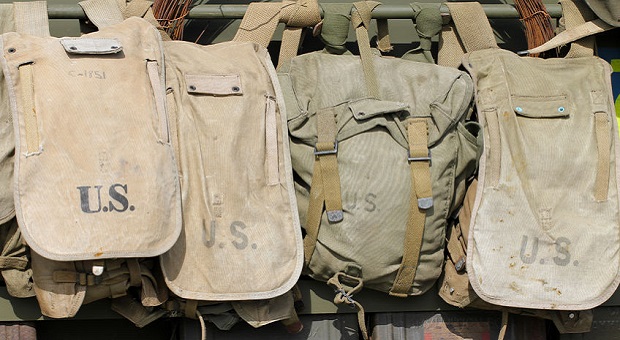

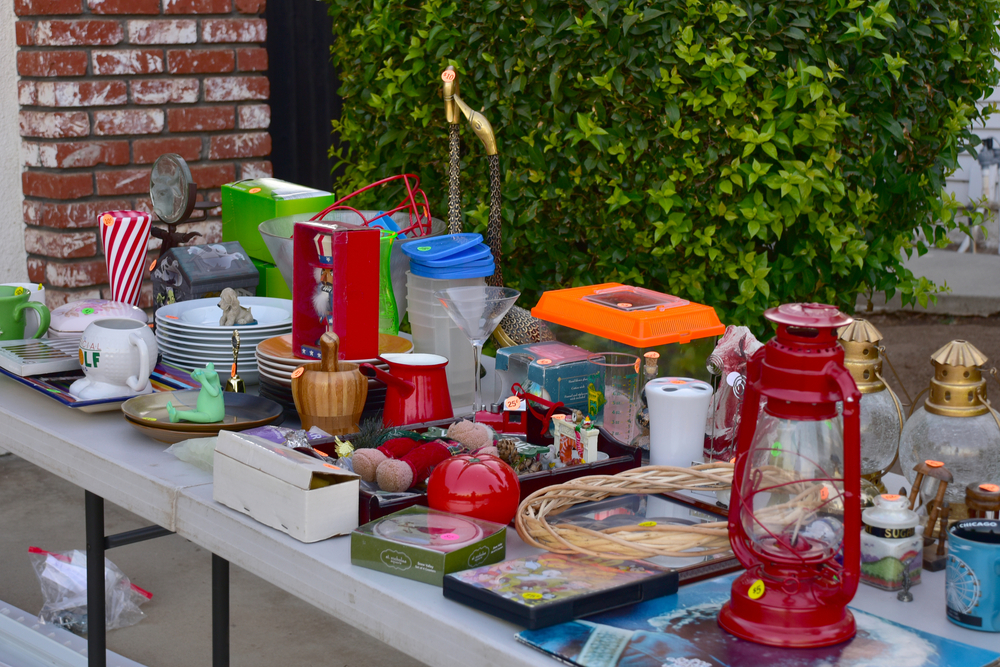







































Can you explain the right side of the body size chart above? Thanks.
It appears that the captions at the top are mistakenly reversed.
Thanks for noticing, but the title of this article was actually suggested by the editor of this website…
You can get the measurement by placing your hands on the hips with your thumbs on your back and draw a imaginary line between your thumbs, where this line intersects the spine is the base, measure the distance from the base to the top of the shoulders . The distance in inches will give you your body size.
Sorry for the confusion. The chart shown in the second tip pertains to the size of the backpack you are going to buy in relation to the measurement of your torso (body type). You can use a measuring tape to determine your body type and use this information to purchase the right BOB bag.
Hi Bill,
The sizing chart formatted incorrectly. I apologize about that. The sizing is by standard of estimated torso length vs. size of backpack. (i.e. If you are tall, like me, over 20″ torso length you would best be suited by a Large Back Pack.
I don’t understand the body type measurements. What part of the body are you measuring? How to do the measurements? From where to where?
Very good article. I think it’s time to cover what should go in it for short treks vs long ones. I am 60years old. I have a 500cc scooter in a faraday cage. I have a 100 mile trip to my …compound in the woods. I have to get around Dallas on highways to make it. Even being well armed, Civil unrest will be my worst ememy.
How do you measure body size? Your chart on this is not clear.
Again, sorry for the confusion. The chart shown in the second tip pertains to the size of the backpack you are going to buy in relation to the measurement of your torso (body type). You can use a measuring tape to determine your body type and use this information to purchase the right BOB bag.
As a 35 plus year backpacker and former Marine infantry officer, I find the weight allowances to be inadequate for bug out longer than a few days . Even on a 7-10 day trip with full survival gear ( tent , bag, food ,water, minimal clothing, stove fuel etc) I find the average weight to run from 38 to 44 pounds.
If you add weapon and ammo. The weight will increase another 10-12 pounds.
Talking about the BOB contents before talking about the BO route you intend to take is almost nonsense (excepting Jeff Anderson’s SCRAM bag…the things you need to pass through or pass by mobs/crowds; and others have good urban advice). Examine various routes you might take if you had to BO from home or your workplace. Would you have to drive for say five miles? Further? If so, where would you drive to, and what would be your route? What choke points or obstacles are along the way? Go to Google Maps (street & earth views) and examine what routes are available to you. If you know your routes, you can determine what resources you most need (based on the resources available to you along your routes); and you can also consider depositing a cache along your route, even if you go to Goodwill and buy a cheap used wool blanket for your cache ($5), and bury a shovel there too. Use the shovel to bury a 5 gallon PVC bucket (with the rubber water barrier in the lid; and get a round one, not a square one). Put in some “marching” re-supply of food, water, BICs, plastic sheet, etc. Determining what YOU NEED for YOUR ROUTE (and making a ground deposit/cache, which would be very good practice), may change the essentials you need to carry on your back. Plan routes for everything: (1) A safe place (walking) near your home where you can watch what is happening in your neighborhood. Why not? Is every house going to be torched? Or just one or some (a house known to a gang)? (2) a safer place within an hour’s walk from your home, should you have to leave it; (3) Is your work place a good BO-location? Or somewhere nearby it(?); but where? What time do you need to leave to avoid the most people? What day in the scheme of news info is best for departing? I found on Google Maps (street view+earth view) a place I call “shrub island” in a farm field about 1 mile N of my home that offers coverage all along the route-way as soon as I cross my street; and I pass several ponds along the way. I will leave at night. My BOB (if it is not ready yet) needs at least some water containers (canteens), water filters, headlamp, clothes or poncho suitable for wet weather (or cold in winter), a BIC (etc). I would do well to plant a bucket or two of Goodwill Store warmth and re-supply (for walking further). which I can carry/bury using my bicycle getting there on a bike in about 10 minutes (early morning, just before dawn). If I have to go further than Shrub Island (and I’ve already planned that too) I can plant another Goodwill container at another location. Caching is as important as planning your BOB, when you plan on BO on foot or on bicycle and especially if you intend to hike miles, or when you don’t know how long you may be “out there”. I got a car, but I cannot guarantee that I can get past traffic choke points. Since I don’t know how long I may have to be Bugged Out, the most important BO locations for foot travel or bike are the closest ones so that I can observe what is going on over several days from a hiding place in my neighborhood. If I go too far, maybe I will have Bugged out unnecessarily or prematurely. How will I know? Who can I call?. I do not want to be like a Japanese WWII Soldier camped out in the boonies long after the war is over, just because I do not know what is going on, and possibly I may not trust info I hear (e.g., news). Where can you hide outdoors, if you need to? If you have to drive to get far enough away, how far minimum do you need to drive to BO on foot or bike the rest of the way? Answer for yourself these questions and you will be much better prepared for all sorts of possible scenarios. I am 63y/o and still humping along under my Army combat motto: Can and Will.
are that’s nice but the 5 c’s are the only thing you need besides a weapon look at Dave Canterbury bug out bag he’s with the Pathfinder school also was on dual survivor that’s all you need to survive and these room for some personal essentials remember 50 pound pack is a very heavy pack
What is a MOLLE>?
MOLLE stands for Modular Lightweight Load-carrying Equipment. On the other hand, MOLLE attachments are those straps which you can find outside the bag. This webbing(s) is used to attach survival tools with for a more efficient way carrying and easy retrieval.
greets! thank you for a good article!
do you have any thoughts as to a bugout bag & general bugout ideas for a person who does not have a car? bicycle is my primary mode of transportation, with the bus being a distant secondary. i suspect a bike is a surer bet in getting to safety in a chaos situation than a car, yet it’s limited in distance one can travel & what one can take with them. one is also more vulnerable to predators when not surrounded by a ton of recycled beer cans. similarly, i suspect using a bike trailer would make the cyclist stand out in exactly the wrong way.
thank you in advance for any ideas you have on this. and thank you for your articles in general.
“Bug out bags” are only good to store your toys survival gear for a short duration of time. Unless it is poison gas or immediated threat of a tornado I plan to stay home for any SHTF conditions.
Firstly, thank you for taking the time, and using your expertise to advise folks about such survival topics as the bug-out bag. Secondly, it appears–to me–that you have inadvertently swapped your body/bag size chart headings. Thirdly, I sincerely question foregoing a camo bag because one may think that others may target them. (That’s partly what your “grab gun” is for.) To me, it simply is most logical to choose a bag that will blend into your suspected outdoor destination for your bug out. Fourthly, as for bag cost, much of this depends upon your purchase source. For example, if you go retail, you WILL pay a premium price. (I bought a 600-denier nylon, 55-liter pack–no internal metal frame–for about $35 on Ebay. [At six-foot-2 and about 210 pounds, I DO have a rather large frame.])
Thank you for your blog post. Jones and I are saving for a new e-book on this theme and your short article has made all of us to save our own money.
Your thoughts really solved all our queries. In fact, greater than what we had acknowledged previous to
the time we discovered your wonderful blog. My spouse and i no longer have doubts including a troubled mind
because you have attended to our own needs right here. Thanks
Wish I had found this article when doing my BOB. For me it was trail and error. It took three bags to find the right one. #2 bag was 50L with three molle small bags. I love the molle and love the looks of the bag, but the bag did not carry well when loaded, felt off balance. I switched to a third bag which is smaller, only 24L but carrys the same gear as the second bag. Both had waist belts. The third is made of 900D heavier material then the second at 600D. The third bag still has room, but I do have mollies on each side for a cooking cup and water bottle. Only other molle is the med kit. Perhaps esplain a little more about the molle option.